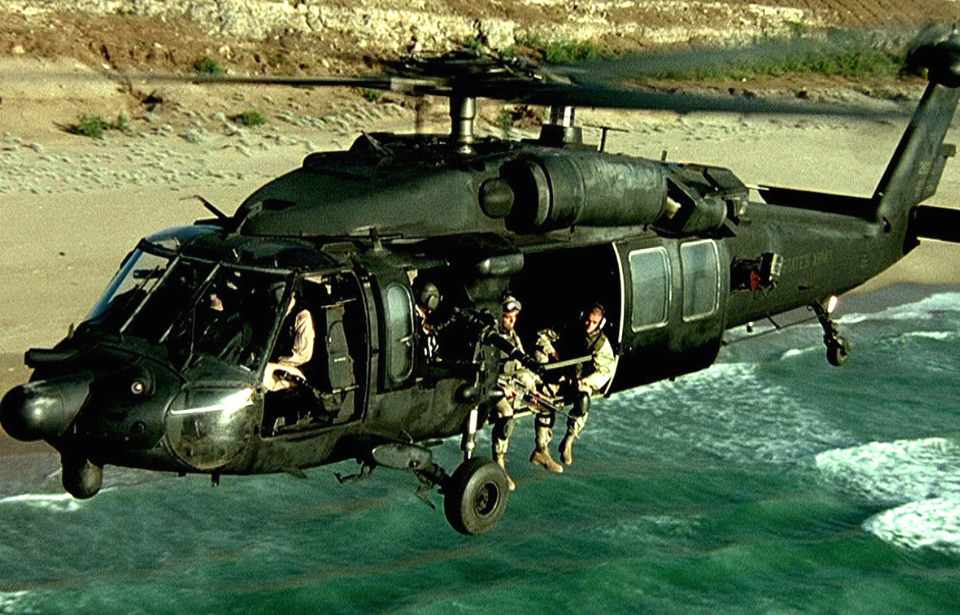When Ridley Scott’s Black Hawk Down came out in 2001, it had all the features of a great movie. Along with drama, tension and tragedy, there were also amazing scenes featuring the now-famous helicopters that gave the film its name. It depicts the events of the Battle of Mogadishu, which is also known as the “Day of the Rangers,” after the group of American soldiers who were involved in the operation.
Black Hawk Down was adapted from the book by American journalist Mark Bowden, who’d originally published a series of articles in the Philadelphia Enquirer telling the story of America’s attempt at intervening in the fight between rival groups in Somalia, intending to capture warlord Mohamed Farah Aidid, who looked likely to take control of the country.
A years-long civil war leaves Somalia in a vulnerable state
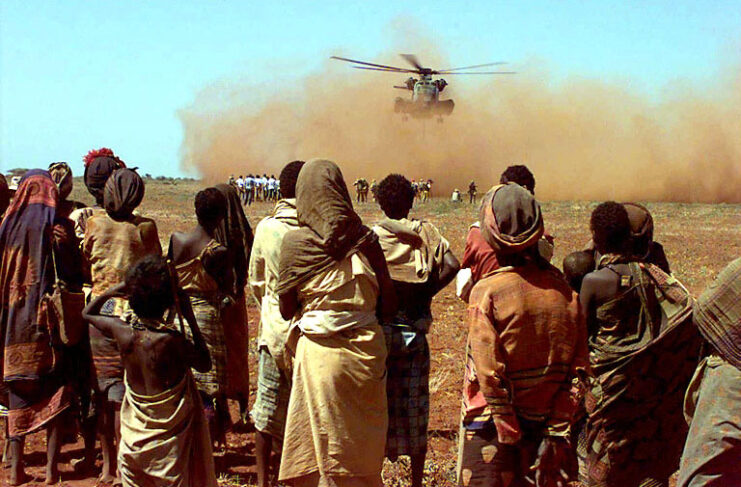
In the lead-up to the Battle of Mogadishu, years of civil war had left Somalia in a fragile state. International attempts at alleviating the turmoil were hampered by the uneasy political situation. Many people were starving because the energy and effort that should have gone into food production and harvests went, instead, toward the fighting.
Organizations trying to provide humanitarian aid were in grave danger, meaning some international aid agencies were forced to withdraw their assistance. When food supplies were delivered, they were often stolen and used to feed the various militia groups, depending on which side managed to seize the goods first.
As a result, the supplies often failed to reach the starving civilians for whom they were intended.
Bringing the seriousness of the situation to light
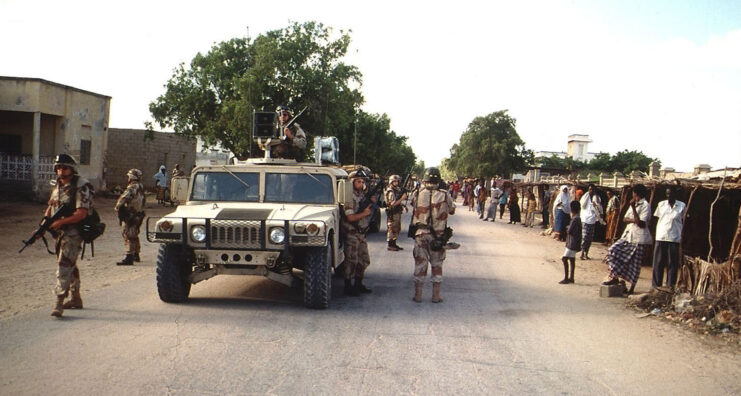
It wasn’t only international humanitarian efforts that were at risk. The United Nations (UN) had a military presence in Somalia, initiated by US President George H.W. Bush in 1992, but its role was challenging and incredibly dangerous. In March 1993, the second phase of the UN’s intervention, dubbed the United Nations Operation in Somalia II (UNOSOM II), commenced.
One of the events that brought the seriousness of the situation to international awareness was a firefight in Mogadishu, which resulted in the deaths of 25 Pakistani soldiers serving under the UN. The incident was sparked by an attempt to either inspect Radio Mogadishu, a government-run station in Somalia, or shut it down completely.
Another incident, taking place in June 1993, saw a group of Pakistani soldiers open fire on a crowd of protesters, injuring over 50 and killing 20.
Operation Gothic Serpent and the leadup to the Battle of Mogadishu
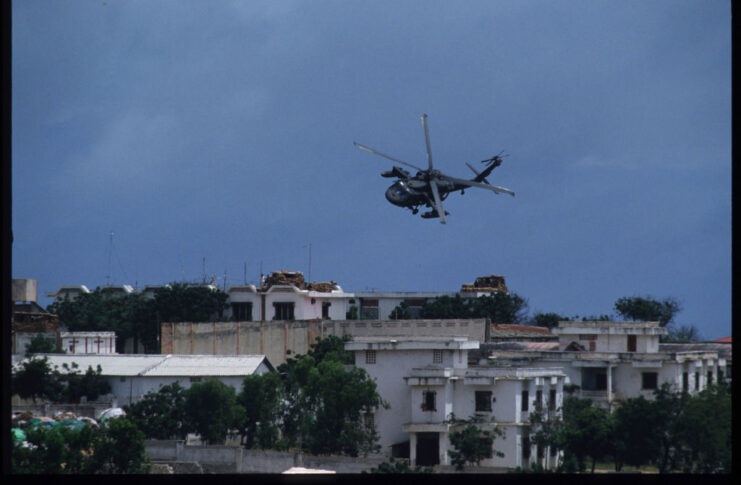
By mid-1993, Somalia was in a state of crisis, and America’s response was to train a group of highly skilled soldiers for a mission that officials hoped would bring some stability. Two elite units – Delta Force and the US Army Rangers – combined their strengths to form a group known as Task Force Ranger. Their mission: capture Mohamed Farah Aidid, who was edging closer and closer to seizing power.
The group, while highly skilled and with more sophisticated weapons, faced several disadvantages. Not only were they fighting in unfamiliar territory, but they were engaging in combat in a completely different kind of terrain from what they knew. Many of the battles took place within the urban sprawl of Mogadishu, its narrow, crowded streets making it difficult to maneuver. The Somali National Alliance (SNA) was more experienced at fighting in this territory, which gave the rebels a distinct advantage.
The Americans had little useful intelligence to help them plan their campaign – they arrested a civilian they’d mistakenly thought was Aidid. On another occasion, they captured 20 soldiers they believed were part of the warlord’s militia, but who turned out to be part of a UN Special Envoy.
Many of the locals regarded the Americans with suspicion, meaning they didn’t have a strong network of informers to provide them with useful intelligence. Aidid, however, had either gained loyalty or created enough fear to ensure that few were willing to help the opposing campaign. Even a $25,000 reward wasn’t sufficient enough to persuade locals to turn the warlord in.
Battle of Mogadishu
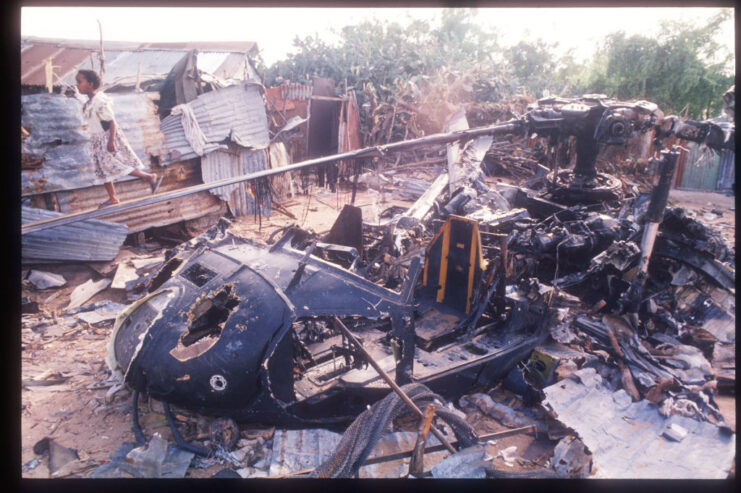
On October 3, 1993, Task Force Ranger thought the opportunity to hit Mohamed Farah Aidid where it hurt had finally presented itself. They went to a run-down building in Mogadishu, where they believed a meeting was taking place with two of the warlord’s lieutenants. The plan was for Delta Force to enter the building while the Army Rangers provided cover outside.
The Rangers’ raid on the building was backed up by a missile attack from Black Hawk helicopters. Once the attack was underway, Aidid’s forces rounded up supporters, including armed civilians who, in the chaos, thought they were also under attack.
That’s when the first of the Sikorsky UH-60 Black Hawks, named Super 61 and piloted by CW3 Donovan “Bull” Briley and Cliff “Elvis” Wolcott, was shot down in what became the defining moment of the Battle of Mogadishu. The helicopter was sent into a spin, while a second was damaged, but managed to remain in the air. The pilot and crew of the damaged chopper were soon on their way to the site of the crashed one.
A convoy of soldiers was also making its way to the crash site through the streets, where fighting had broken out. Soon, news came that another Black Hawk was downed: Super 64, piloted by CW3 Michael Durant. The convoy rescued those they could from the scene of the initial crash before continuing to the site of the second.
Master Sgt. Gary Gordon and Sfc. Randy Shughart
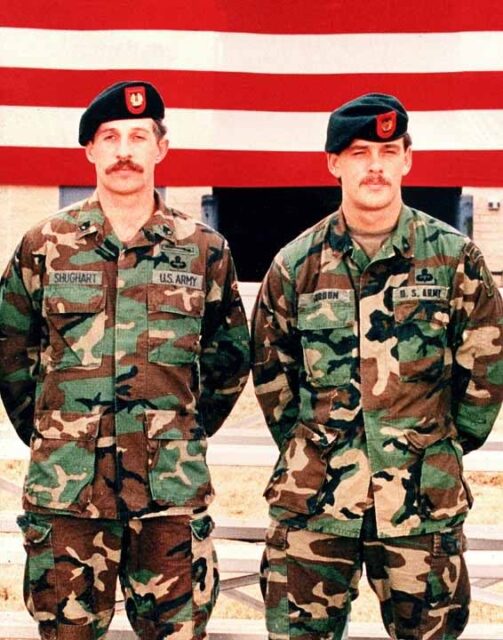
At the site of Super 64, Sfc. Randy Shughart and Master Sgt. Gary Gordon, both snipers, were in their positions, awaiting orders. They’d initially wanted to attend to those involved in the crash, but were denied, as their superiors feared the situation was too dangerous and believed they were of better use in the air. After their third request, they were finally given permission, inflicting heavy casualties against the Somali rebels.
Despite their own Black Hawk, Super 62, providing support fire, the two snipers lost their lives in the engagement. Gordon went down first, with Shughart picking up his comrade’s weapon and handing it to Michael Durant, who’d survived the crash. He then ran into the melee, surviving just 10 more minutes before he was gunned down. Durant was taken hostage and later rescued.
Gordon and Shughart were posthumously awarded the Medal of Honor for their actions during the Battle of Mogadishu, the first time the distinction had been awarded since the Vietnam War.
Aftermath of the Battle of Mogadishu
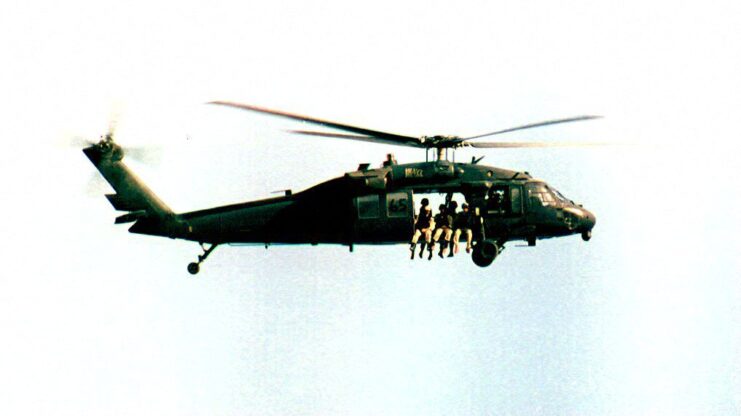
The following day, the American troops were evacuated from the crash sites and taken to a UN base. The casualties were high; of the American task force, 18 had been killed, and 73 were injured. The losses were far greater among the Somali population, with hundreds, including many civilians, dying during the Battle of Mogadishu. Inevitably, this contributed to the hostility toward the Americans.
Following the engagement, the American public called for a withdrawal of troops from the region, with President Bill Clinton ordering the termination of combat operations against the Somali National Alliance. Instead, the US forces would remain as short-term reinforcements, with all soldiers removed by the end of March 1994.
Black Hawk Down (2001)
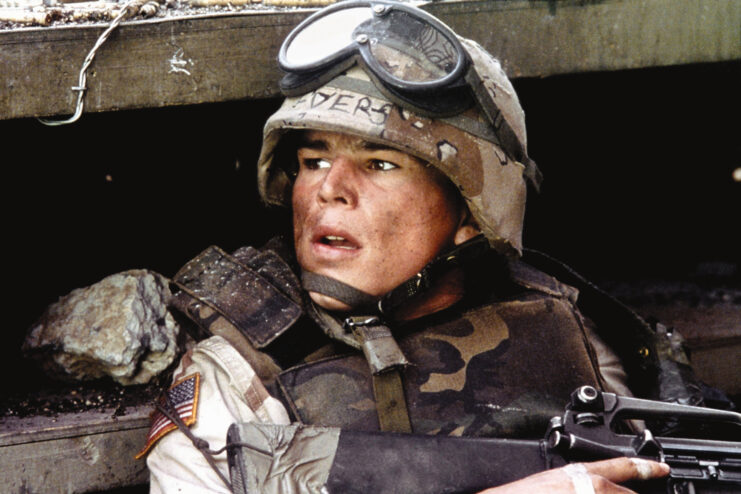
Unlike most war movies, Black Hawk Down isn’t a story of heroism and glory – it’s a tale of how a meticulously planned campaign went disastrously wrong. It stars Josh Hartnett, Ewan McGregor, Tom Sizemore, Eric Bana and Sam Shepard – an ensemble cast.
Those portraying the Army Rangers and Delta Force operators underwent training at Fort Moore (then-Fort Benning), Georgia and Fort Liberty (then-Fort Bragg), North Carolina, respectively. The actors charged with playing members of the 160th Special Operations Aviation Regiment (Airborne) were given a speech from Michael Durant at Fort Campbell, Kentucky.
Black Hawk Down was praised for its portrayal of urban warfare, but some argued it failed to provide enough context regarding the Battle of Mogadishu and the conflict in Somalia. It was also criticized for its depiction of Somalis.
More from us: Seven Soldiers Have Defected to North Korea Since the Korean War
Upon its release, the film was nominated for several awards, going on to win two Oscars, for Best Film Editing and Best Sound.
